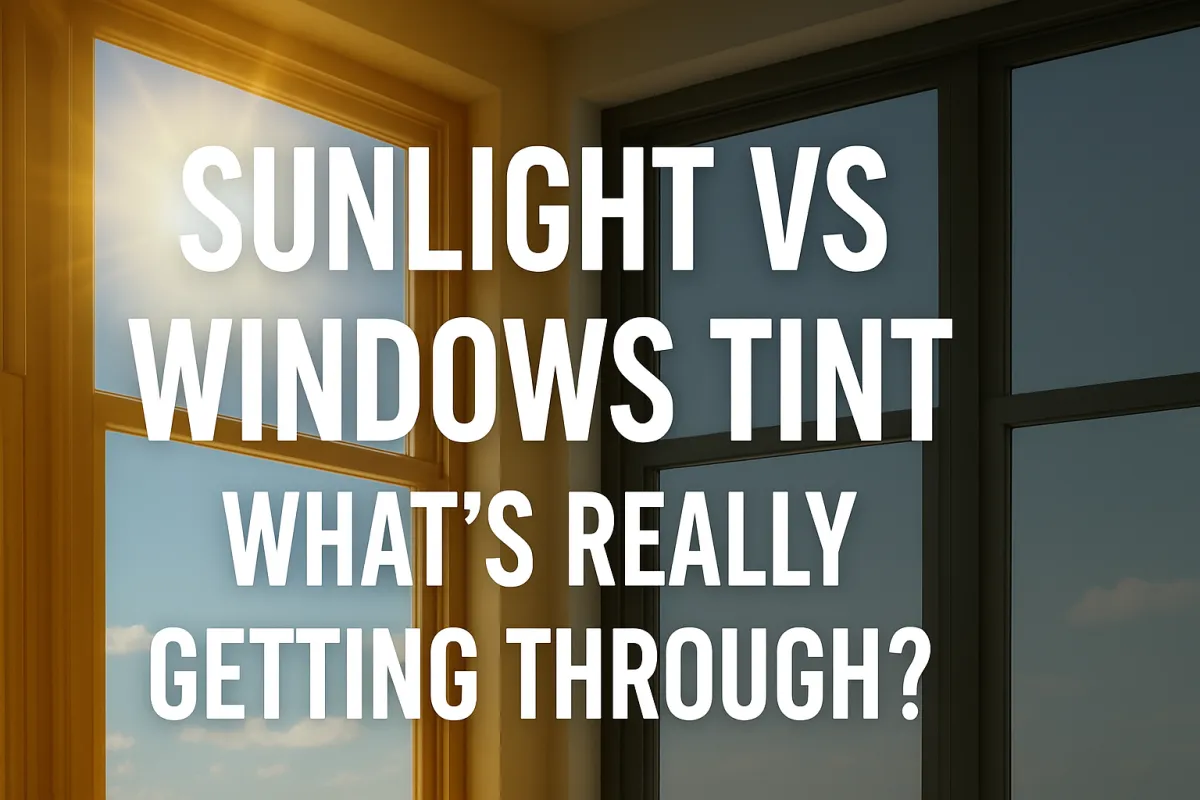
Sunlight Vs Window Tint: What’s Really Getting Through?
☀️ Sunlight may brighten your space — but it's also bringing in heat, skin-aging UVA rays, and invisible damage. Standard glass blocks only part of the problem. This blog breaks down what’s really getting through your windows and why ceramic window tint is your best defense. From UV protection to energy savings, here’s what you need to know about sunlight vs window tint — and who wins.
Sunlight streaming through your window can feel warm, energizing, even comforting. But beneath that golden glow hides a spectrum of invisible radiation — some of it helpful, some of it harmful. While Earth’s atmosphere does its part to filter out the worst of it, what about your windows? Are they protecting you and your home, or just letting it all flood in?
In this blog, we break down what sunlight is actually made of, how different materials block or transmit it, and why ceramic window tint might be the secret weapon your home (and skin) needs.
The Science of Sunlight: More Than Just Light
Sunlight isn’t a single beam — it’s a full spectrum of electromagnetic radiation. Each part of the spectrum has a different wavelength and impact on our lives.
A. Types of Radiation in Sunlight
Ultraviolet (UV) Radiation
UVC (100–280 nm): Extremely harmful, but completely absorbed by Earth’s ozone layer.
UVB (280–315 nm): Partially absorbed. Causes sunburn, skin cancer, and DNA damage — but also helps produce vitamin D.
UVA (315–400 nm): Penetrates deeper into skin and is responsible for aging and indirect DNA damage. Makes up about 95% of UV radiation reaching Earth.
Visible Light (380–700 nm)
This is the light we see. It allows us to perceive color, drives photosynthesis, and helps regulate circadian rhythms.
Infrared Radiation (700 nm–1 mm)
Invisible but felt as heat. Infrared makes up almost half of the sunlight that reaches the ground.
B. What Makes It Through to You?
Sunlight’s intensity is shaped by how much of each radiation type survives its journey through the atmosphere and into your home.
Earth’s Atmospheric Shield
Our atmosphere is nature’s first sunscreen.
A. Natural Filtering
UVC: Completely absorbed by the ozone layer.
UVB: Largely absorbed, but some still reaches Earth.
UVA: Only partially filtered — most of it hits the surface.
Infrared: Some is absorbed by water vapor and gases like CO₂, but plenty makes it through.
Visible Light: Largely unfiltered, and that’s a good thing — it’s vital for life.
B. Why That Matters
Even with the atmosphere’s help, UVA and infrared radiation still reach you. These are the culprits behind premature aging, heat buildup in homes, and interior damage.
Standard Window Glass: A Partial Barrier
Your home’s windows do offer some protection — but they have limits.
A. What They Block
100% of UVC and UVB radiation
That means the most dangerous rays don’t make it through untreated glass.
B. What They Let Through
Up to 74% of UVA — meaning indoor exposure is still a thing.
Most visible light — which you want.
A significant amount of infrared — resulting in heat gain and discomfort.
C. Real-World Impact
Without additional protection:
UVA can still damage your skin indoors and fade furniture, flooring, and artwork.
Infrared builds up heat, pushing your cooling system harder and increasing energy bills.
Ceramic Window Tint: The Game Changer
Ceramic tints are a modern, high-performance solution — engineered for protection without sacrificing aesthetics or visibility.
A. What Is Ceramic Tint?
A film made of non-metallic, nano-ceramic particles that block radiation without the reflectivity or interference issues of older tinting tech.
B. What It Does
Blocks up to 99% of UVA and UVB
Significantly reduces infrared transmission — slashing heat gain
Maintains high clarity and light transmission
C. Why It’s Better Than Standard Tint or Glass
UV Protection: Shields your skin and slows indoor fading
Heat Reduction: Lowers room temperature and cooling costs by up to 30%
No Glare: Cuts reflections without making your space feel dark
Tech-Friendly: Doesn’t interfere with Wi-Fi, phone, or GPS signals
Glass Safety: Strengthens windows and reduces shatter risk
Ceramic tint isn’t just for cars anymore — it’s ideal for residential and commercial windows too.

FAQ
Q: Can I get sunburned through a window?
A: Yes — especially from UVA rays, which pass through untreated glass and cause long-term skin damage.
Q: Does ceramic tint make your house dark?
A: No. Ceramic films are optically clear while still blocking UV and infrared radiation.
Q: Is ceramic tint really worth the cost?
A: Absolutely — from energy savings to skin protection, the benefits add up quickly.
Q: Can I use ceramic tint on home and car windows?
A: Yes. It's ideal for both residential and automotive applications.
